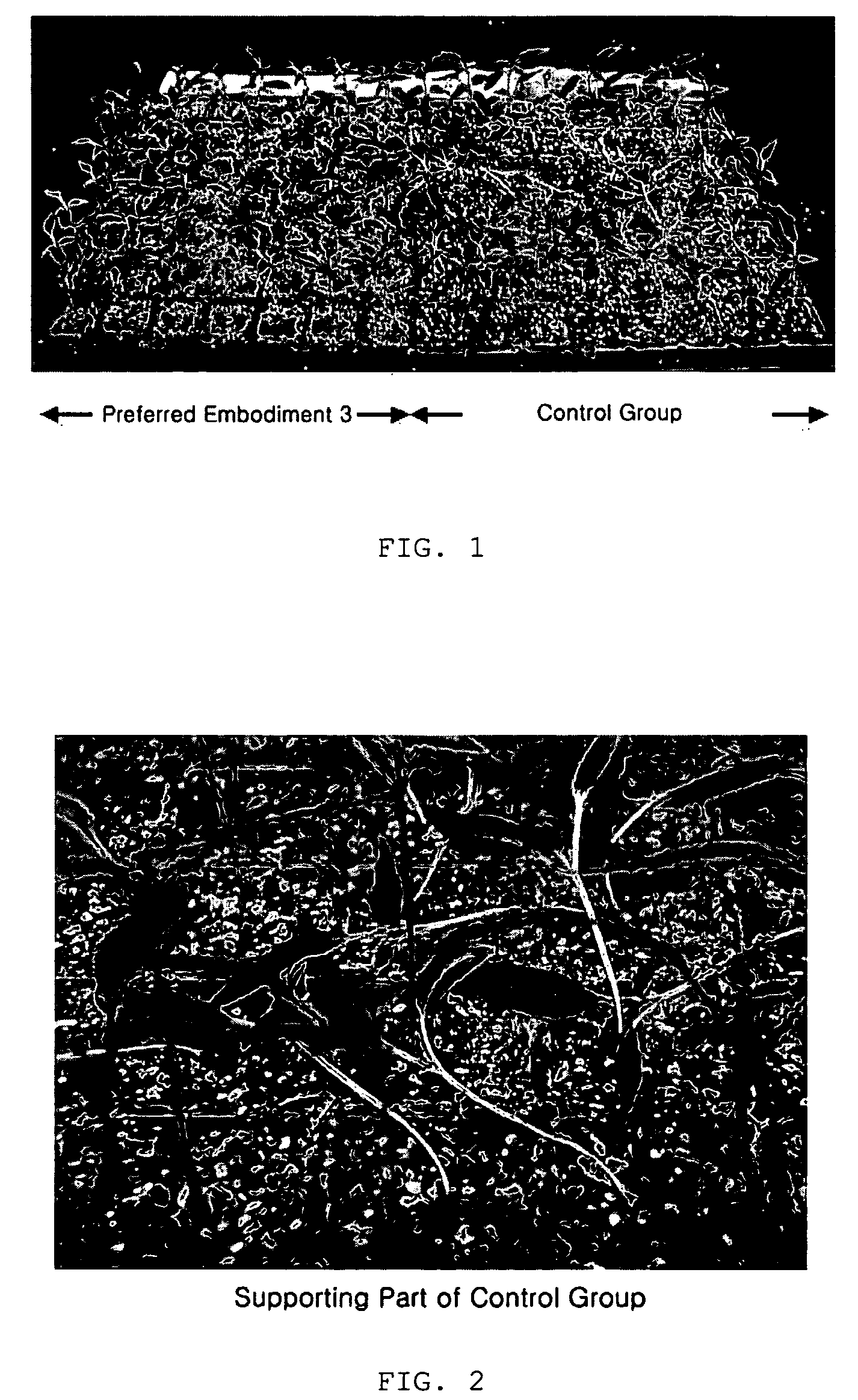Method for producing the sustained-releasing agricultural chemicals
a technology of agricultural chemicals and agricultural chemicals, applied in the field of new products, can solve the problems of serious environmental pollution, complicated procedures, and serious health affecting the users of agricultural chemicals such as farmers or demanders, and achieve the effect of slow degradation
- Summary
- Abstract
- Description
- Claims
- Application Information
AI Technical Summary
Benefits of technology
Problems solved by technology
Method used
Image
Examples
embodiment 2
[0059] Three experimental groups were adopted for the examination as followed and for each group 250 plants of cucumber were allotted. Concretely, they were composed of the control group which was not treated with phosphorous acid salt, and the comparative group which treated with 100 ppm of agricultural chemicals made of phosphorous acid salt in a liquid type around the region adjacent to soil and stem in Sep. 26, 2000 and Oct. 4, 2000 respectively toward cucumber in 20 ml per one plant. The last group was the experimental group which was treated with the sustained-releasing agricultural chemicals composed of phosphorous acid salt and prepared by the process of Preferred Embodiment 2 in 1 g per one plant and the like.
[0060] In order to measure the preventive effect of disease and the disease generation frequency, fungi which appeared on the cucumber leaves with the similar shape to the white powder were recognized in naked eyes. Concretely, the standard manuals of the agricultural ...
embodiment 3
[0069] Two experimental groups were adopted for the examination as followed. Concretely, the control group was not treated with phosphorous acid salt and was composed of 56 plants. The experimental group was treated with the sustained-releasing agricultural chemicals prepared by the process of Preferred Embodiment 3 in 1 g per one plant and was composed of 49 plants. In Nov. 26, 2001, 5 ml of the zoospore suspension in 5.times.10.sup.3 cfu / ml of the concentration was sprinkled to each pepper plant. After 5 days from the pathogen inoculation, the disease infection was observed in naked eyes in Dec. 1, 2001 (See Table 5).
[0070] Through the entire experimental procedure, water was sprinkled sufficiently in a 2-day interval and the room temperature was maintained at 26.degree. C.
5 TABLE 5 Relative No. of disease / Frequency Prevention No. of treated plants (%) (%) Contol group 19 / 56 33.9 0.0 Preferred 0 / 49 0.0 100 Embodiment 3
[0071] As illustrated in Table 4, in case of the agricultural ...
PUM
 Login to View More
Login to View More Abstract
Description
Claims
Application Information
 Login to View More
Login to View More - R&D
- Intellectual Property
- Life Sciences
- Materials
- Tech Scout
- Unparalleled Data Quality
- Higher Quality Content
- 60% Fewer Hallucinations
Browse by: Latest US Patents, China's latest patents, Technical Efficacy Thesaurus, Application Domain, Technology Topic, Popular Technical Reports.
© 2025 PatSnap. All rights reserved.Legal|Privacy policy|Modern Slavery Act Transparency Statement|Sitemap|About US| Contact US: help@patsnap.com

